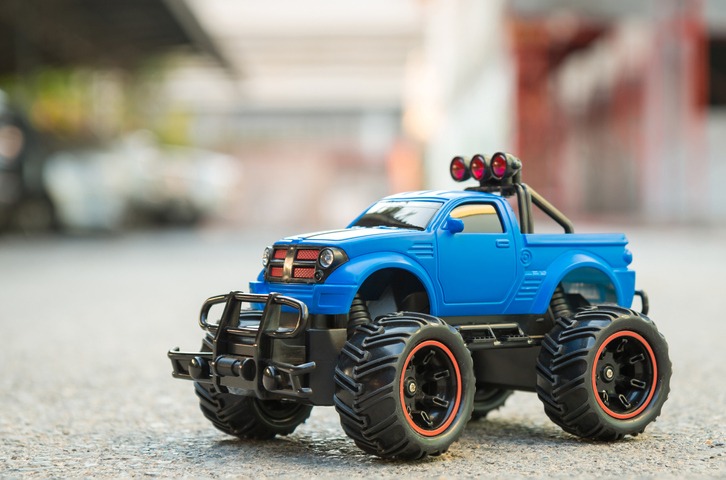Technology dominates the world today. From multiple technology-based companies, such as Google, Samsung, and Apple, the world has been introduced to revolutionary advancements, such as artificial intelligence, mobile printing, and many more.
As technology advanced, so did the toys people play. From simple and makeshift items of leisure, toys have become complex and high-maintenance akin to a machine. One great example of how toys evolved to become gadgets and small machines is radio-controlled or remote-controlled toys, typically called RC toys.
These are self-powered toys that can be controlled from a certain distance through a remote control device to send signals of instructions through radio waves. Some RC toys have become hybrids of professional devices, such as a drone.
How do Remote Control Toys Work?
Different toys use numerous mechanics of operating their instructions, but the basic principle behind remote-controlled toys is the same. They have five main parts:
- Transmitter. The transmitter sends radio waves to the receiver of the toy. The transmitter has its own power source, allowing it to send radio signals to the receiver.
- Receiver. This is the antenna and circuit board within the toy that receives signals from the transmitter. Upon receiving the signal, a command activates inside the toy to create a certain movement.
- Motor(s). This part of the toy enables them to make movements, such as turning, changing direction, speeding up or down, etc.
- Circuit Board. To deliver the specific command to the designated part of the toy, the circuit board serves as a network where the command travels to particular areas of the toy to generate any desired action.
- Power source. Remote-control toys need a power source to function in the first place.
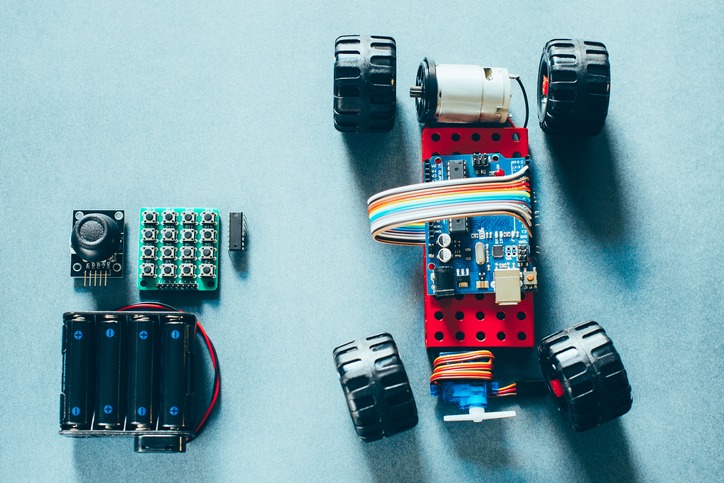
Now that you know the basic parts of a remote-controlled toy let’s explore how the entire process of controlling the toy using a remote. As you hold the controller in your hands and push certain buttons to make a command, the transmitter relays a specific number of electrical pulses that correspond to the action you want your toy to make. These electrical pulses travel through the air.
As soon as the toy’s receiver captures the radio waves, the motors ignite to life, and the power source sends power to the entire machine of the toy.
Then, the radio waves containing the command are sent to the circuit board, translating the number of electrical pulses (signals) into a particular action or movement.
Typically, full-function controllers have six controls corresponding to six basic commands:
- 16 pulses for forward
- 40 pulses for reverse
- 28 pulses for forward left
- 34 pulses for forward right
- 52 pulses for reverse left
- 46 pulses for reverse right
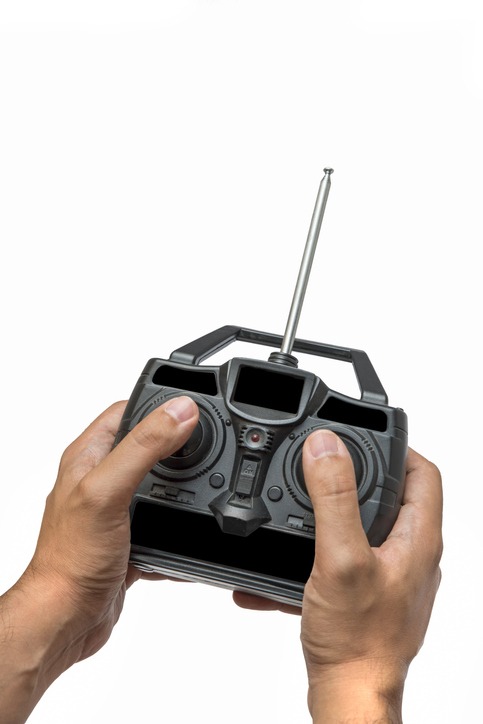
Note that this is not always followed, but the standard among the majority of RC toys. In addition, most RC toys create movement not by the command itself but through another source of movement. For instance, an RC toy airplane creates movement by manipulating the flaps to glide in the air, or an RC sailboat toy controls the rudder to create movement and control direction with the wind.
Here are some common concerns you might encounter when working with an RC toy.
Increasing RC Transmitter Range
It gets more exciting playing with RC toys knowing you can control it even from a substantial amount of distance. Increasing your transmitter range can be done by changing your antenna to more efficient or bigger ones or using directional antennas to boost your transmitter’s signals. You can also achieve this by utilizing transistors, but this method can get costly and tricky.
Transmitter-Receiver Compatibility
Any transmitter works with any type of receiver. However, you must note that if your frequencies and transmitter power are mismatched, it easily damages your receiver permanently. So, it is important to ensure that your transmitter and receiver both operate on the same frequencies.
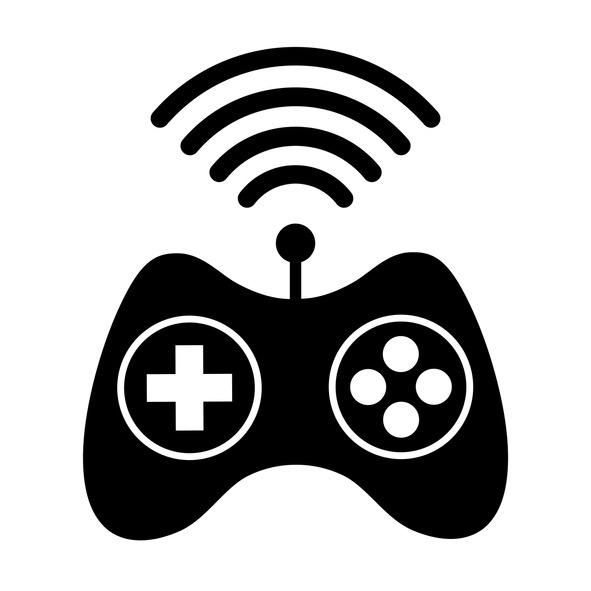
Stopping a Remote Control Interference
Crosstalk or interference happens when two devices use the same frequency. To avoid this, check your device if it has any options to change frequencies. Do so until the interference is gone. Most long-range RC devices work on either 27 MHz or 49 MHz, so take time to read your RC toy manual to know its frequency and prevent future problems with interference.
RC toy manufacturers have widened their scope of variety in producing a diverse set of RC toys for the market. If you want to pick up this hobby, looking for some RC toys to gift someone or want to start your own collection of RC toys, then here are some RC toy models that you might want to explore
- Cars
- Trucks
- Fantasy vehicles
- Airplanes
- Helicopters
- Blimps
- Sailboats
- Motorboats
- Submarines
- Robots
- Animals
Yes, RC toys are toys, but they are more complex due to their technology. It is always better to know the basics of RC toys and remote control to avoid future issues with the devices and to be more knowledgeable in troubleshooting these concerns. Meanwhile, find out here how a model train can help with a child’s motor skills.
Common Problems with Remote Control Toys
Many people face problems with their RC toys as well. Below are a few of the common ones along with their solutions as well.
My Toy Gives a Delayed Response Time
One of the most common issues that can arise with your remote control toys is that they start to give away a delayed response time. You might be trying to push it forward or backward but the toy might not be responding instantly rather it would be taking 3 to 4 seconds or even more to follow the command. The primary problem associated over here is with the antenna or transmitter. If your toy has not fallen off from somewhere or is not involved in any sort of crash, chances are that the antenna and transmitter are perfectly fine.
Therefore, the first step to resolve this problem is to change the batteries. If the antenna and transmitter are fine, then the batteries must have weakened to the point that they are not powering up the antenna and transmitter to respond at the right time. Based on this, the first thing to do is to try and replace the batteries with new ones. If the issue persists, chances are that your antenna or transmitter has broken. Replacing them will solve the problem.
If you are interested in building a model railroad, follow this – Guide to Building Your Own Model Railroad
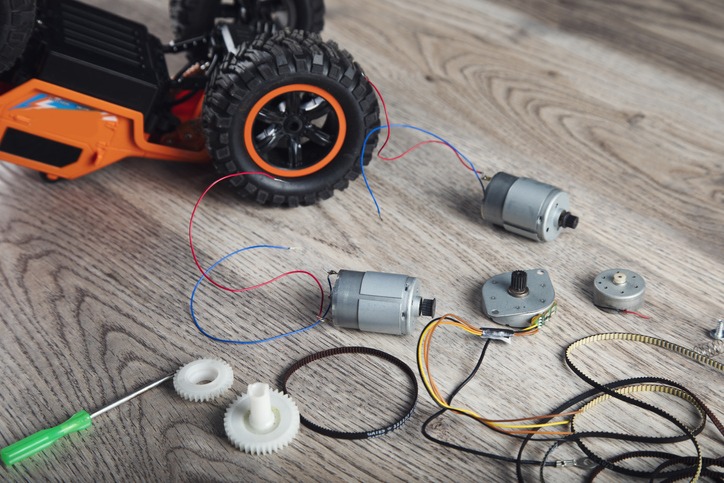
Some Functions of My Toy are Not Working
At times, people face the issue that their RC toys are giving a limited response. They might go forward and not backward. Alternatively, they might follow all directions but fail to go forward. Any of these issues is highly complex and signals that the transmitter has developed some sort of fault.
However, to troubleshoot this issue, the first thing to do is to evaluate if all the wiring of the RC toy is in its perfect condition. Sometimes, the wires disconnect and the toy responds in the form of limited connectivity only. If you have built up the remote control toy yourself, you can open it up and recheck the wiring. Alternatively, you can have it checked by a technician as well.
Other times, it is not the issue with the wiring but with the circuit board. The circuit board connections may not be stable or not in proper connectivity. If there are minor faults such as one or two functions not working, you can most likely get the circuit board repaired. However, if there are many issues, it is recommended that you change the circuit board completely.
My RC Car Runs at Slow Speed but the Transmitter and Antenna are Fine
This is one problem that many people face and are unable to figure out what exactly is causing the issue to the RC Car. Some RC cars start to run slowly over time and people can’t figure out why, particularly when all the connections and components are in their perfect condition. One of the key reasons why this happens is due to lack of maintenance of the cars.
There are many components of cars that wear and tear over time. These could be parts other than the transmitter and antenna. For example, one reason why the car is running slow is that the tires have dirt on them. Possibly, the tires have worn out because you have not been cleaning them on time or using them on rough surfaces. The internal components such as the motor might be working slow due to overuse or overheating.

My RC Toy Gives an Unusual Response
Many get confused when their RC toy starts behaving abnormally. A major mismatch between the user command and the toy response is seen. Often, this results in crashing the toy as well. Therefore, it is important to spot any abnormal behavior in your RC toy as soon as possible and take action against it as well. Common abnormal behaviors include abrupt change of direction without any command or improper reaction to the command given via remote.
For example, if a car starts to move in the right direction constantly or goes forward when given the command to come back is an example of an unusual response. For other RC toys such as a plane or a helicopter, you might see it doing front flips, glitching, or rapid change of altitudes without any command.
Despite the fact that these issues are not common, they can sometimes arise and distract the user as well. The main issue over here is with the circuit board. Usually, when a circuit board is in use for a long time, it has been through overheating. Besides, it may have gone through natural wear and tear. In such cases, the circuit board should be changed immediately to avoid the risk of crashing your toy.
You can read more about taking care of your drone here – How to Take Care of Your Drone?
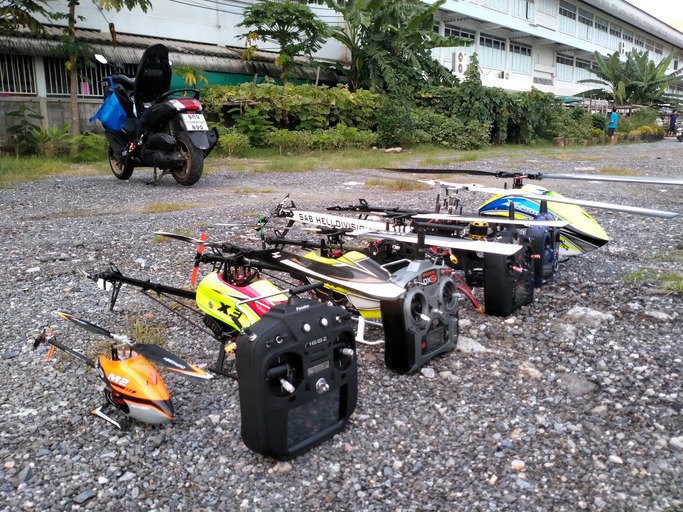
My Toy is Not Responding
A less frequent but big issue with your RC toy could be its complete shutdown and no response to any of the controls. The toy may not even turn on and this could be apparent by the fact that if it has any lights, they are off even after you turned the toy on. Most of the time, this issue arises when the circuit board has had a major malfunction. Therefore, you need to replace the circuit board and check again. If the issue persists, it could be because of a malfunction in the remote. We have discussed this below.
I Replaced the Circuit Board but the Toy Still Isn’t Working
At times the issue with RC toys could not be with the toy but with the remote that you have with it. Even the remotes have their own circuit board and other components such as an antenna which can wear over time. It’s good to change the remote components and see if the toy works. Most likely, the antenna might be damaged as it is an external component and has higher chances of getting damage.
Conclusion
A lot of people enjoy playing with RC toys be it kids or grownups. The adults generally prefer a more professional form of the RC toys while the kids prefer the easier ones. Nonetheless, it is important to know how a remote control toy works as mentioned above. In case you ever face any issues, look up to the possible problems and solutions as highlighted in the article.

